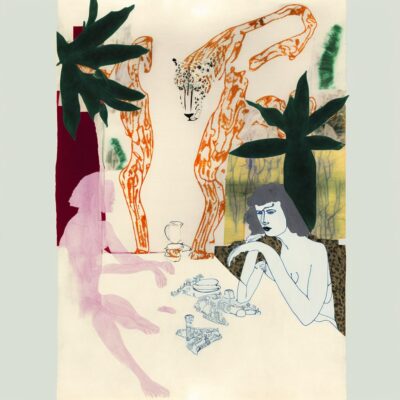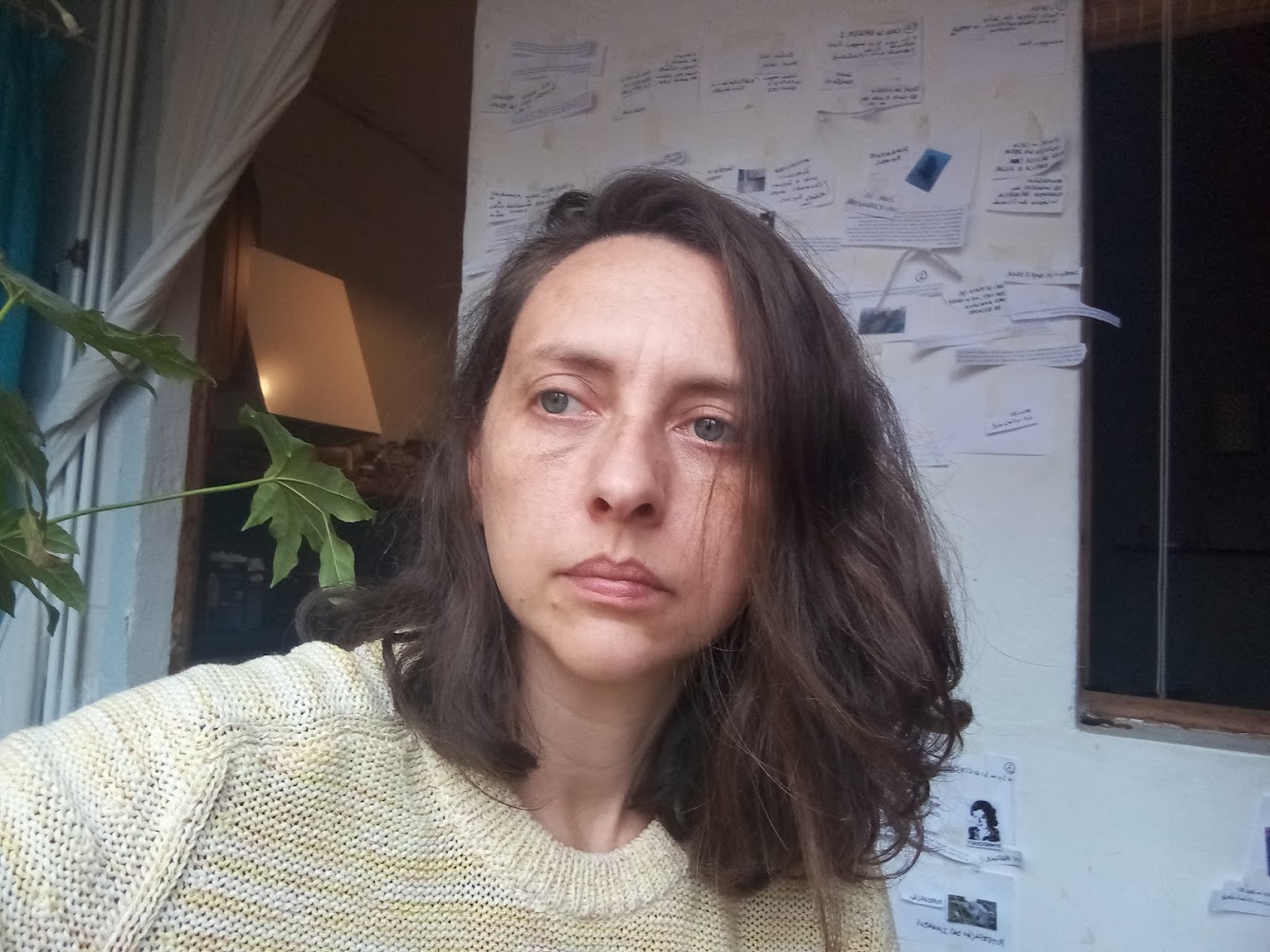Search
To search for an exact match, type the word or phrase you want in quotation marks.
A*DESK has been offering since 2002 contents about criticism and contemporary art. A*DESK has become consolidated thanks to all those who have believed in the project, all those who have followed us, debating, participating and collaborating. Many people have collaborated with A*DESK, and continue to do so. Their efforts, knowledge and belief in the project are what make it grow internationally. At A*DESK we have also generated work for over one hundred professionals in culture, from small collaborations with reviews and classes, to more prolonged and intense collaborations.
At A*DESK we believe in the need for free and universal access to culture and knowledge. We want to carry on being independent, remaining open to more ideas and opinions. If you believe in A*DESK, we need your backing to be able to continue. You can now participate in the project by supporting it. You can choose how much you want to contribute to the project.
You can decide how much you want to bring to the project.

I will limit this text to the idea of composition in which a piece (in my case, a dance piece) is understood as an invitation to pay attention. Composition, thus, has to do with giving relief to an elusive, dark zone that happens only between things. From this perspective, I understand that each creation process is a unique way of making a world and that each world has its own way of organizing itself. The exercise of composition is, thus, not unrelated to the inevitable relationship between the question of the what (the questions and concerns that are the motors of creation), the how (the relationship between the materials that will translate these concerns), and the when where (the organization of this emotional relationship that is an invitation to pay attention).
Composing, thus, has to do with becoming aware of the groups of vibrant materials in which we are already immersed, listening to the desire to displace materials (including our bodies) from their inertia, and organizing these events as an invitation to other people to join in the act of paying attention.
As a creator, and also as someone who accompanies many artists in their creation, I focus my attention on these unique ways of making a world in order to understand what kind of organization and composition each world needs.
Things that aren’t connected but need to be together
Sometimes a world is created from excess, from accepting the ridiculous, from playing around until one arrives at an unknown place. This world appears in the midst of chaos, of a thousand exercises, improvisations, indefinite practices, fragments of gestures. A sequence of movements next to an object that doesn’t yet make sense, next to a gaze that is still without a body. The lack of power of an image does not mean it should be discarded, it’s just a matter of waiting. Sometimes this way of creating lasts until the end (the finished piece). A piece of movement that appeared in the first days of the process can reappear on the day of the performance. When that happens, I pay attention to promoting the proliferation of attempts and see composition as a rhythmic territory that will attract the attention of the public. In these worlds, composing is making diverse materials coexist even though sometimes they don’t connect. It is the creation of a rhythmic landscape, a score of attention and sensations. A hole, a long pause, an explosion, a distracting repetition and then a break, an acceleration, a surprise, something predictable. Composing is a dynamic meeting, an organization of tensions. Sometimes there is sensory and emotional contamination from one area to another, sometimes not, it all depends on the route that we are proposing for the perception of the work in the encounter with the public. That journey is the translation of our initial questions into sensations.
A collection of sensations
Sometimes a world appears from a limited quantity of things, from a restricted set of references and from the junction between worlds that are connected in their operations (though not necessarily in their contents). The existence of a lighthouse, a polaroid, together with a warm-up practice that leads to a state of presence, for example. In this kind of world, I focus on understanding how these things are connected. Composing implies perceiving if this set of things is a bag that will accompany the construction of this world like an amulet that will never be seen, or if each unit will become a scene, a moment in the work. When a world appears from a collection of sensations, you have to respect the operation of each block, material, scene, but also create the architecture where these units can coexist. It is as if we were talking about a house, a house that keeps changing, riddled with holes and with walls that sometimes rise and sometimes disappear. Placing a room at the end of a corridor is completely different from placing it next to the garden, for it depends on the tone of the place we are creating.
Within folds
Sometimes a world appears in the unfolding of logic, of the cycles that go from being affected to formulation and execution. In this world, the first actions in the studio are like previous, unofficial events or pared-down attempts to deal with the profusion of images. A lack of power of an image causes it to be left behind, and it is the events that inform the images that remain. The first efforts consist in finding the minimum gesture, the initial image, and these contours and limitations can be said to be a starting point. Composition comes from inhabiting a world and making it last, from respecting events. The singularity of gestures and creative freedom appear within the contours found in the initial gesture. It is a world that grows inwards, not to the sides or outwards. Within this way of creating a world, I pay attention to preserving a certain obsession with repeating the operations I discover, and composition is merely respecting the differences that emerge from this insistence.
Organic structures
Sometimes a world appears from a structure, a script, from mathematical logic. A world of meat and bones. The bones comes from emotions, from desires translated into plans that give the dramaturgical direction of the work, into images of a place and its duration. The meat comes from the work of swallowing other images, embodying words, making metaphors, populating bodies with fictions. This world invents a language of gestures that will inhabit a structure. In this kind of world I pay attention to two things. First, to feeding the bodies images in order to compose from the minutiae of their presence, and secondly, in refining the rhythms and duration of the previously determined structure.
Insist on the gesture or on the state
Sometimes a world appears from the repetition of a task, from an obsession with a gesture, from the maintenance of a state of presence, and the differences appear when this repetition is pushed to its limit. I pay attention to the sensations of those who see how this task is carried out. I try to understand if the differences that arise from the repetition of the gesture are enough to keep my attention as an audience. In this world, the work of composition does not consist in inserting new materials into a task, but rather in identifying and reinforcing possible anchor points that already exist in the action. These points can serve as a kind of breathing gesture that lasts. Finding the end of the task is often an important part of the job. It can end in exhaustion, but when it doesn’t, the artist needs to make a decision outside of the gesture. This stopping point can be defined based on how the work will be read or rewritten at the end, or based on the sensations intended for the public to experience at the end of the experience.
Share a practice
Sometimes a world appears from a methodology that becomes a practice, a sort of game, a set of restrictions that can be activated as a group or individually. A score, a task list, a set of tools that can be transmitted and reappropriated by others. When practice is the very body of the piece, it is not so much the forms or the aesthetic results that matter, but rather the ways of operating in that world. In this case, I pay attention to the emerging rules, to the set of restrictions that translate the questions that move the work, and work to refine them and not to crystallize them in any specific way.
(Cover image: Illustration by Rafael Frazão. Photo: Carolina Campos)

Carolina Campos (Caxias do Sul – 1978)
Involved in different circuits of creation and research, she develops her practices between performance, writing and pedagogy. She is interested in methodological approaches that reflect collectivities and collaboration in artistic creation. He tries to inhabit a twilight zone where the passion for looking coexists with darkness. She currently investigates artistic accompaniment as a state of attention that opens up spaces for the imagination of worlds in relation and situated critical thinking. She is one of the closest collaborators to the development of Real Time Composition since 2012. This research, developed with Portuguese choreographer João Fiadeiro, through practice and the body, relates to philosophy, metaphysical speculation and neuroscience. In Brazil she worked with Lia Rodrigues Cia de Danzas between 2008 and 2011. She was artist-in-residence at La Caldera (2019), La Escocesa (2020 – 2022) and El Graner (2022).
"A desk is a dangerous place from which to watch the world" (John Le Carré)